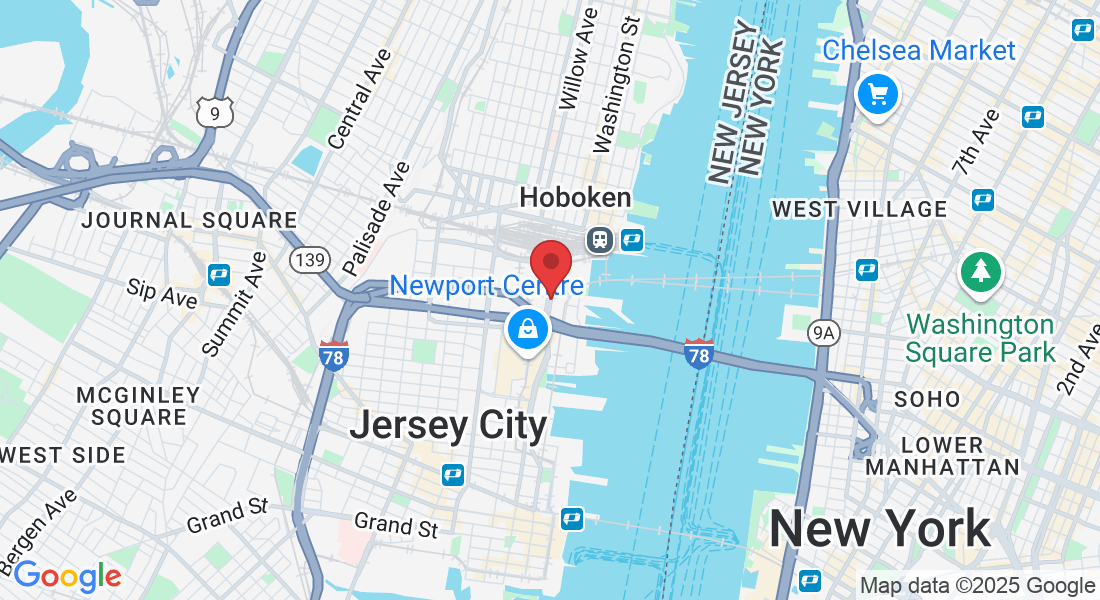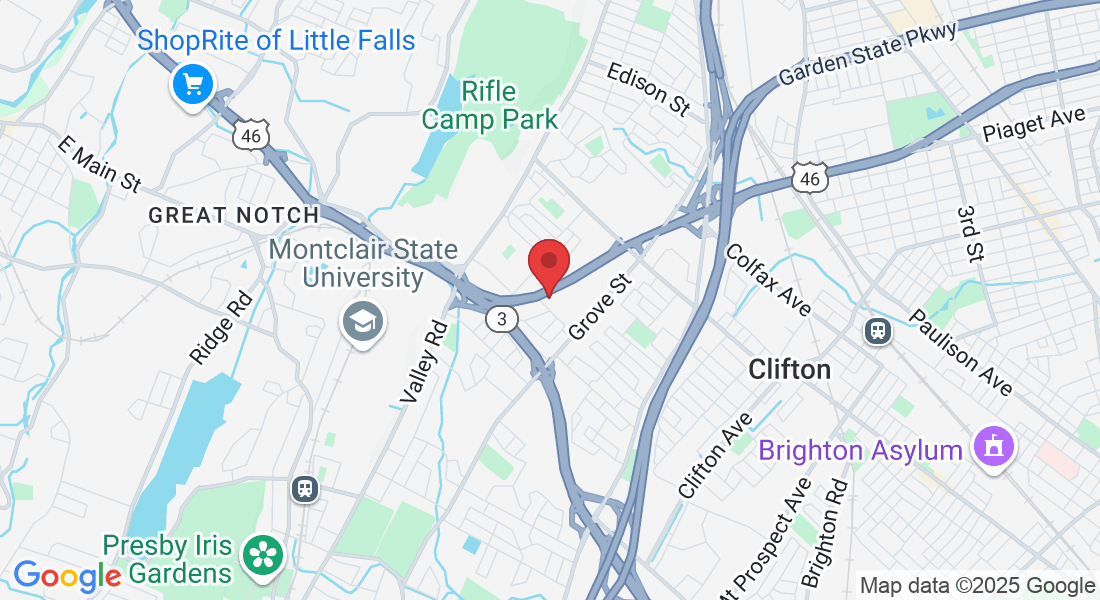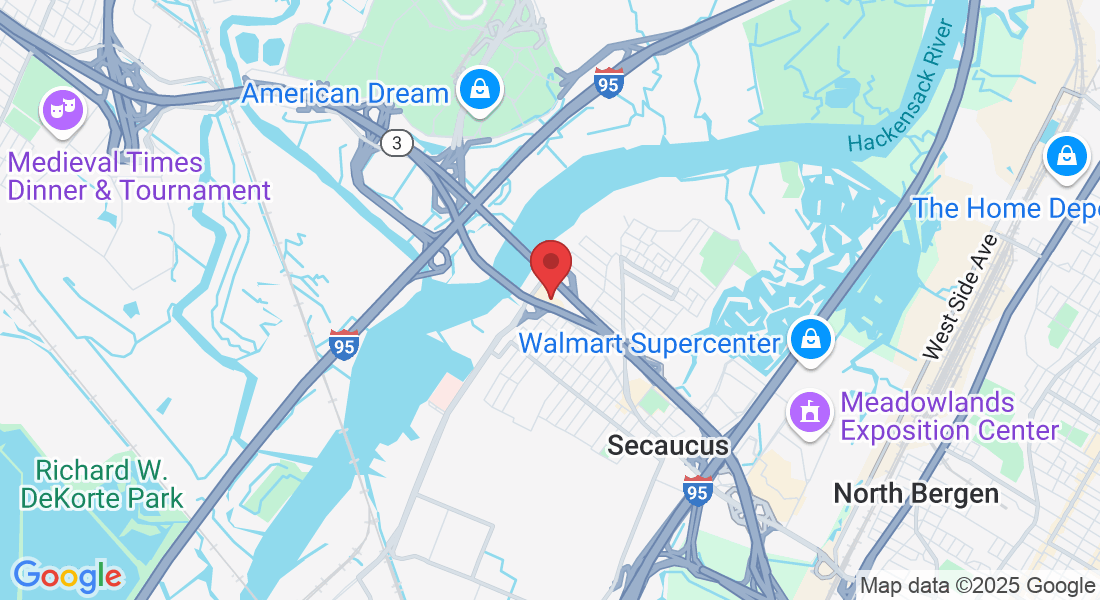New Jersey Rehab Experts
Specializing in comprehensive orthopedic care, New Jersey Rehab Experts offers a wide range of services including Physical Therapy, Sports Physical Therapy, Dry Needling, Chiropractic Care, Neuropathy Treatment, Pain Management, and Manual Therapy. Our state-of-the-art facility is staffed by board-certified therapists dedicated to delivering top-tier care, ensuring you achieve optimal recovery and wellness.
Clinic Located in Jersey City (Newport), Secaucus and Clifton
Genuine Feedback from
Our Patients
Our Affiliations

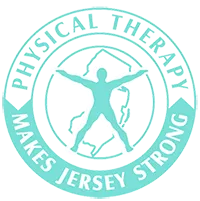

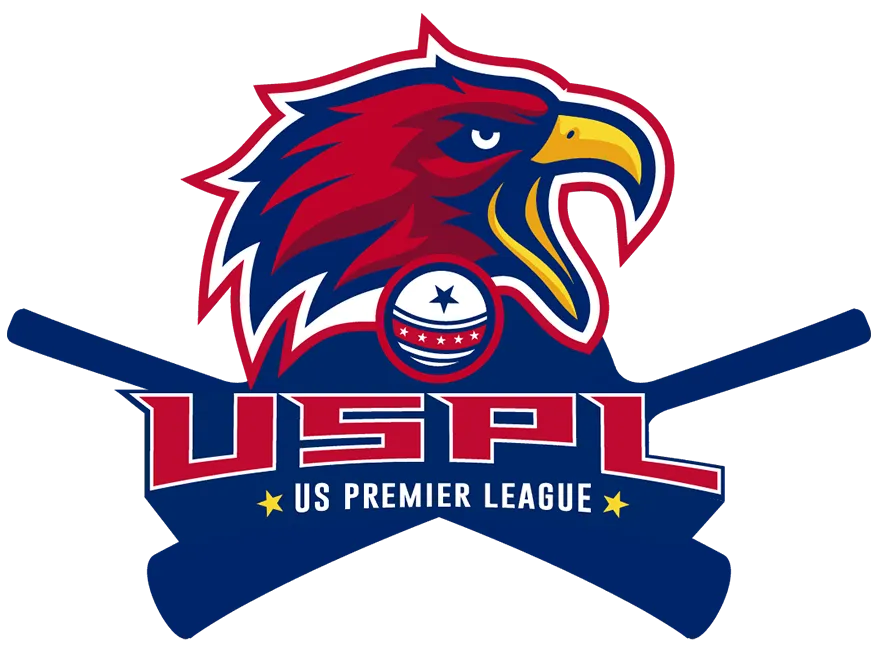


Explore Our Diverse Range of Disciplines
Discover a world of exceptional care customized for all ages! Our dedicated professionals deliver top-notch medical attention, expert rehabilitative therapy, and warm companion care for adults, seniors, and young patients. Experience personalized healthcare with a heart!
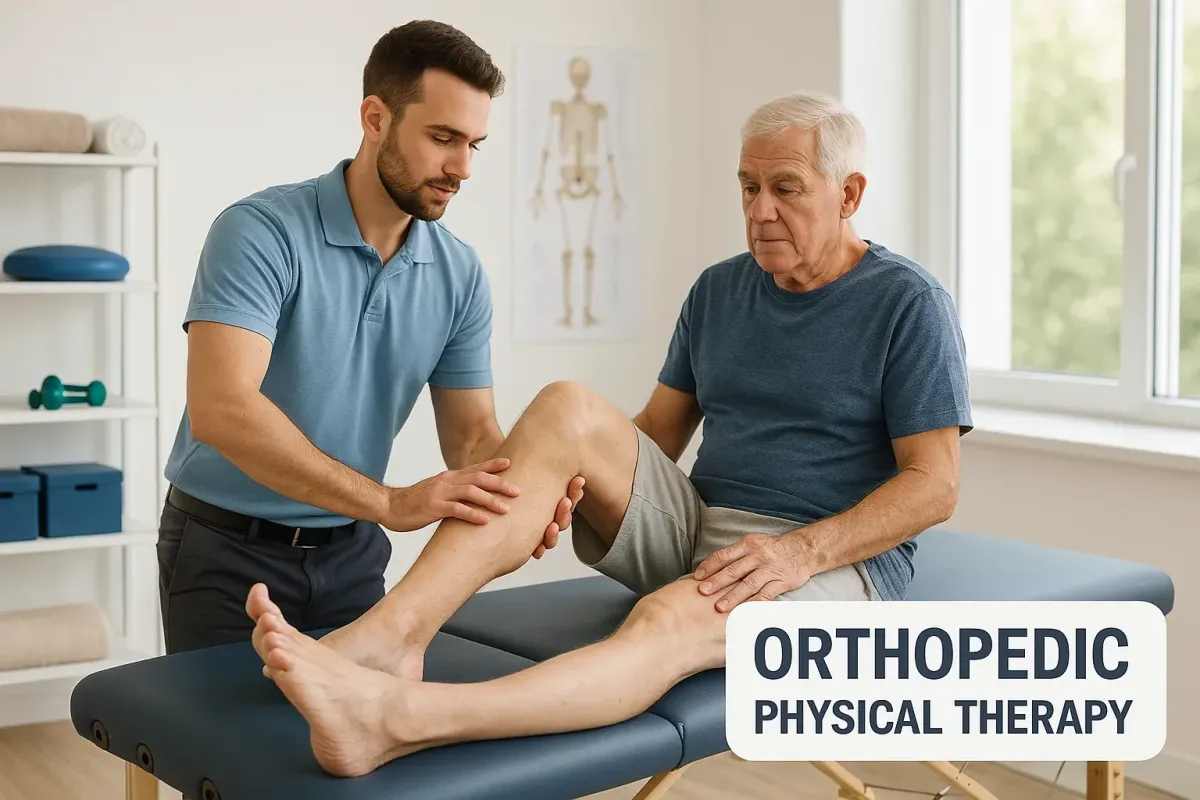
Orthopedic Physical Therapy
At New Jersey Rehab Experts our Orthopedic Physical Therapy program is designed to help patients recover from musculoskeletal injuries, surgeries, and chronic conditions affecting the bones, joints, muscles, ligaments, and tendons. Whether you're healing from a sports injury, managing arthritis, or recovering after orthopedic surgery, our expert therapists create personalized treatment plans to restore mobility, reduce pain, and improve overall function. We use evidence-based techniques such as manual therapy, therapeutic exercises, joint mobilization, dry needling, ultrasound, and neuromuscular re-education
to accelerate your recovery and prevent future injuries.
Our goal is to get you moving confidently and pain-free—whether you're getting back to the gym, the job site, or simply your everyday routine.

Geriatric Physical Therapy
Our Geriatric Physical Therapy services are tailored to meet the unique needs of older adults. As we age, our bodies undergo natural changes that can affect balance, strength, mobility, and overall independence. Our experienced therapists are here to help seniors stay active, safe, and confident in their daily lives.
We specialize in the prevention and treatment of age-related conditions such as osteoporosis, arthritis, joint replacements, balance disorders, and general deconditioning. Our personalized therapy programs focus on restoring strength, improving flexibility, reducing pain, and preventing falls.
Our geriatric therapy goals include: Enhancing mobility and functionPreventing falls and promoting safetyManaging chronic painIncreasing independence in daily activitiesSupporting recovery from surgery or hospitalization. We take a compassionate, patient-centered approach to care—empowering seniors to maintain a higher quality of life and remain active within their homes and communities.
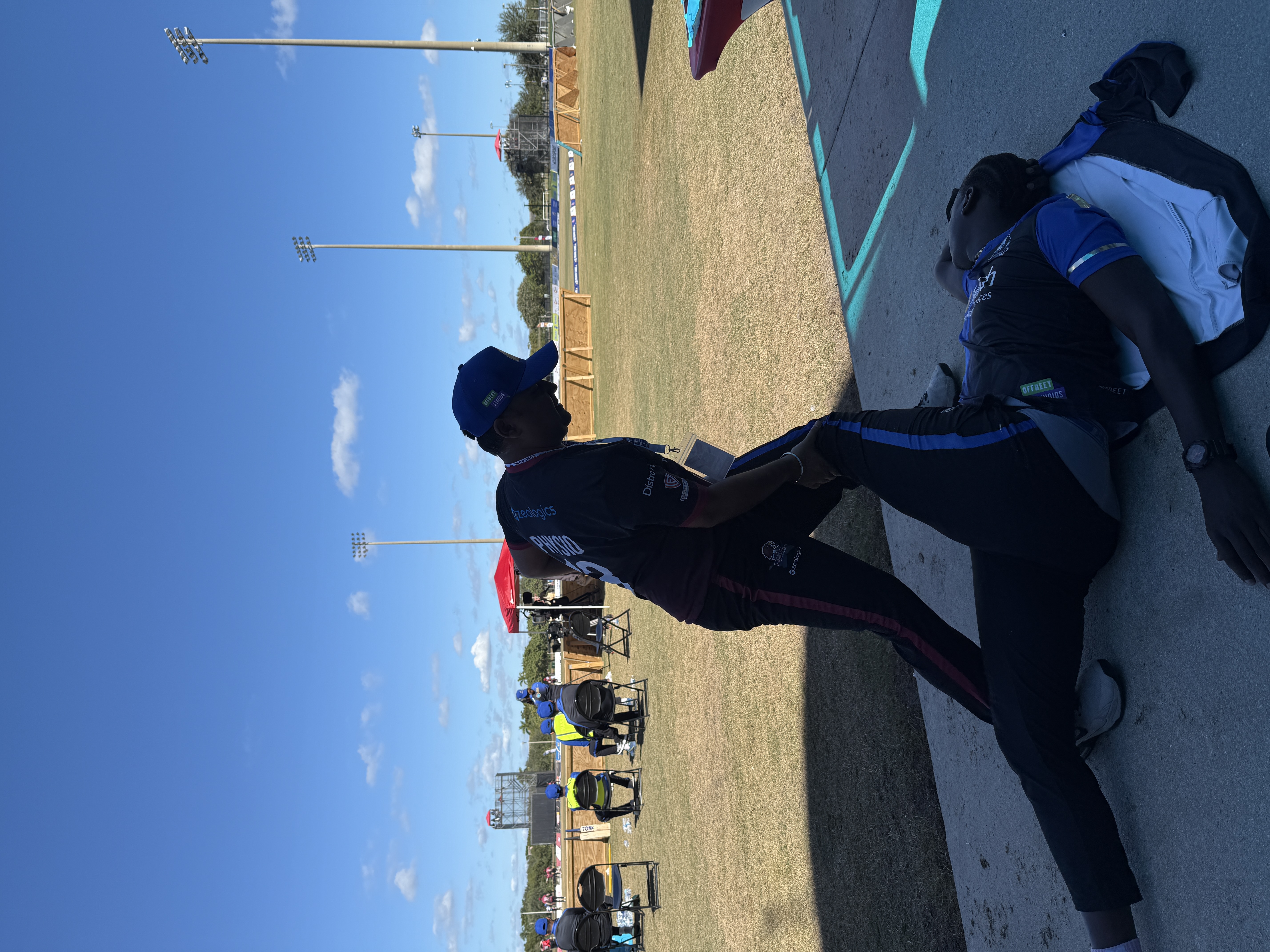
Sports Physical Therapy
At New Jersey Rehab Experts our Sports Physical Therapy program is built for athletes of all levels—from weekend warriors to professional players. Whether you're recovering from an injury, enhancing performance, or aiming for a safe return to sport, we’ve got your back (and knees, shoulders, ankles… you name it!).
Our sports rehab specialists use advanced techniques and evidence-based protocols to treat common athletic injuries such as ACL tears, rotator cuff strains, tennis/golfer’s elbow, sprains, tendonitis, and more We combine manual therapy, functional training, neuromuscular re-education, strength conditioning, dry needling, and return-to-sport testing to help you recover faster and perform better.

Vestibular Rehabilitation Therapy (VRT)
Feeling dizzy, off-balance, or lightheaded? You're not alone—and you don’t have to live with it. At
New Jersey Rehab Experts our Vestibular Rehabilitation Therapy (VRT) is designed to help you regain control, stability, and confidence in your everyday movements. VRT is a specialized form of physical therapy aimed at treating disorders of the inner ear and balance system , such as vertigo, BPPV (Benign Paroxysmal Positional Vertigo), Meniere’s disease, post-concussion dizziness, and general imbalance. These conditions can make even simple tasks feel overwhelming—but with the right therapy, relief is possible. Our skilled therapists perform a thorough assessment to identify the root cause of your symptoms and develop a custom treatment plan using: Balance and gaze stabilization exercises Canalith repositioning maneuvers (like the Epley maneuver) Habituation and desensitization techniques Fall prevention strategie
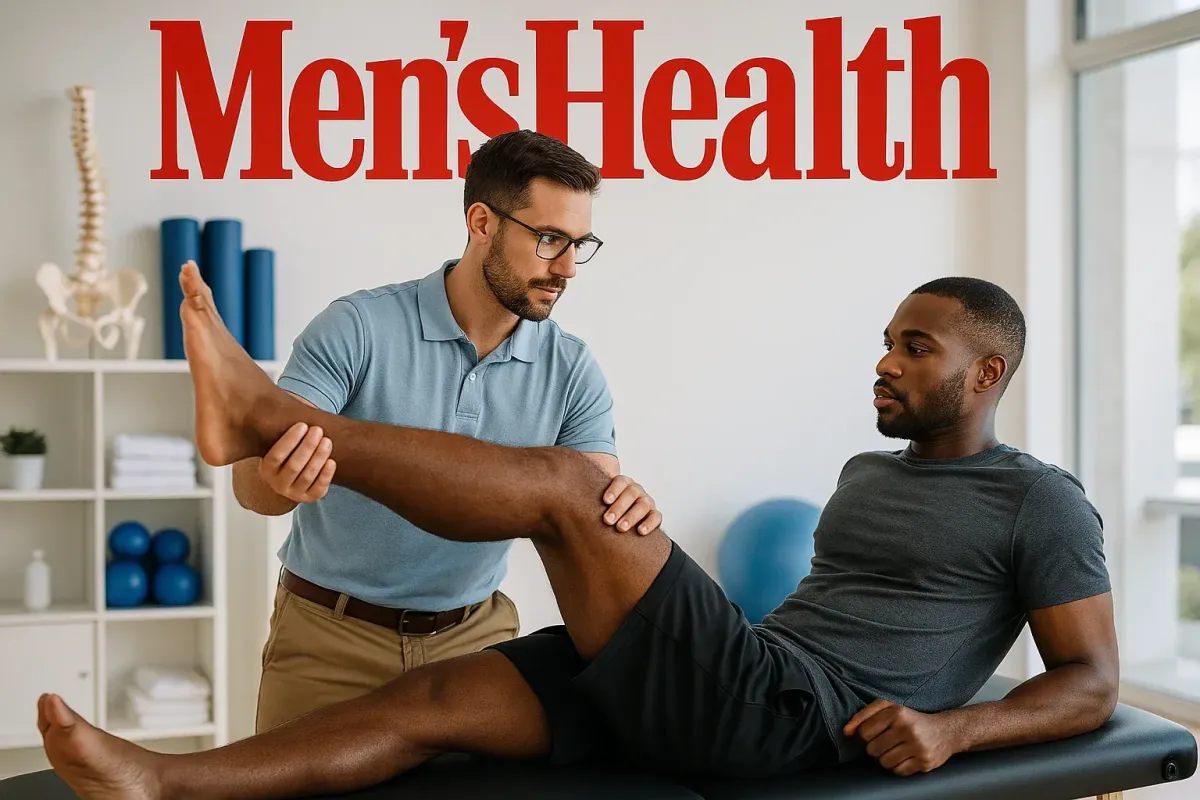
Men's Health Physical Therapy (Pelvic Health PT)
Pelvic health isn’t just a women’s issues men experience it too and we’re here to help. At New Jersey Rehab Experts our Men’s Health Physical Therapy
program is designed to treat a wide range of pelvic floor dysfunctions that can impact comfort, confidence, and quality of life. Our expert therapists offer
discreet, one-on-one care for men experiencing: Pelvic painUrinary urgency, frequency, or leakagePost-prostatectomy rehabilitationErectile dysfunctionConstipation and bowel issuesCore weakness or abdominal pressure Through targeted manual therapy, pelvic floor retraining, biofeedback, breathing techniques, and posture correction, we help restore normal function and reduce symptoms—without surgery or medication. Why it matters: Pelvic floor dysfunction can be frustrating, but it’s also very treatable. We take a judgment-free, evidence-based approach to help men feel strong, supported, and back in control of their bodies. Take the first step toward healing—you don’t have to suffer in silence
.

Motor Vehicle & Work Injury Rehab Specialist
At New Jersey Rehab Experts, we specialize in
Motor Vehicle and Work Injury Rehabilitation, helping patients recover from car accidents and workplace injuries with expert, personalized care. Our team treats conditions such as whiplash, low back pain, joint injuries, concussions, and soft tissue damage, using evidence-based therapy to reduce pain, restore function, and support long-term recovery. We work closely with physicians, attorneys, and insurance providers to ensure proper documentation and seamless coordination of care. Whether you're dealing with a workers' comp case or personal injury claim, our goal is to get you back to work, life, and movement—safely and confidently.
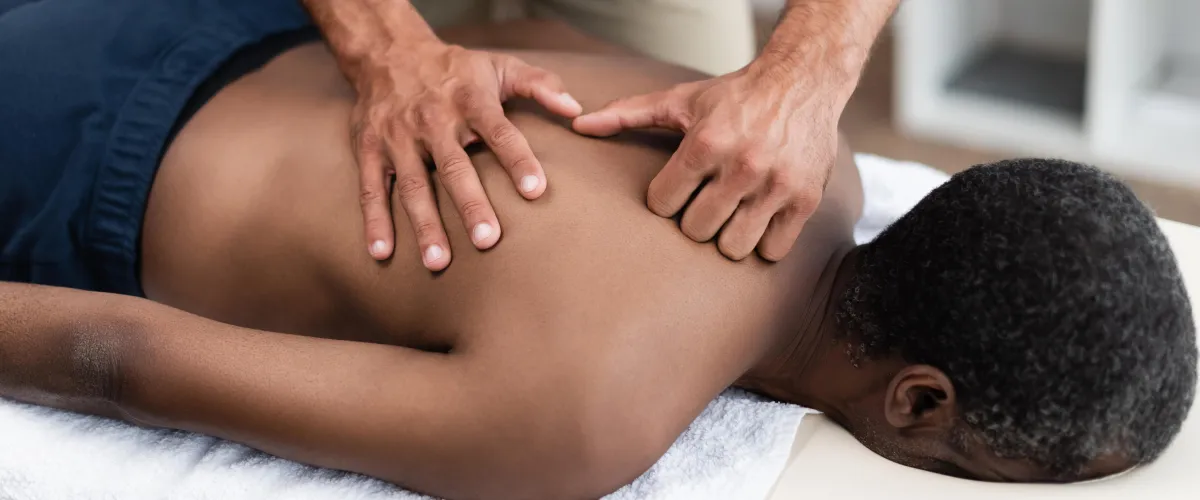
Manual Therapy
Looking for a hands-on approach that goes beyond basic physical therapy?
Manual Therapyoffers targeted, expert techniques designed to relieve pain, improve mobility, and accelerate healing—naturally. This isn’t your average treatment. Imagine combining the precision of Mulligan Mobilizations with the posture-correcting power of the McKenzie Method, or experiencing the rapid results of High-Velocity Thrust Techniques and Spinal Manipulation to unlock stiff joints. Add in the deep-tissue benefits of Myofascial Release (MFR)
and the dynamic support of Kinesiology and Sports Taping, and you’ve got a comprehensive system that helps you move better, recover faster, and feel your best. Whether you're an athlete, a desk worker, or simply tired of chronic pain—this is where real, lasting relief begins.
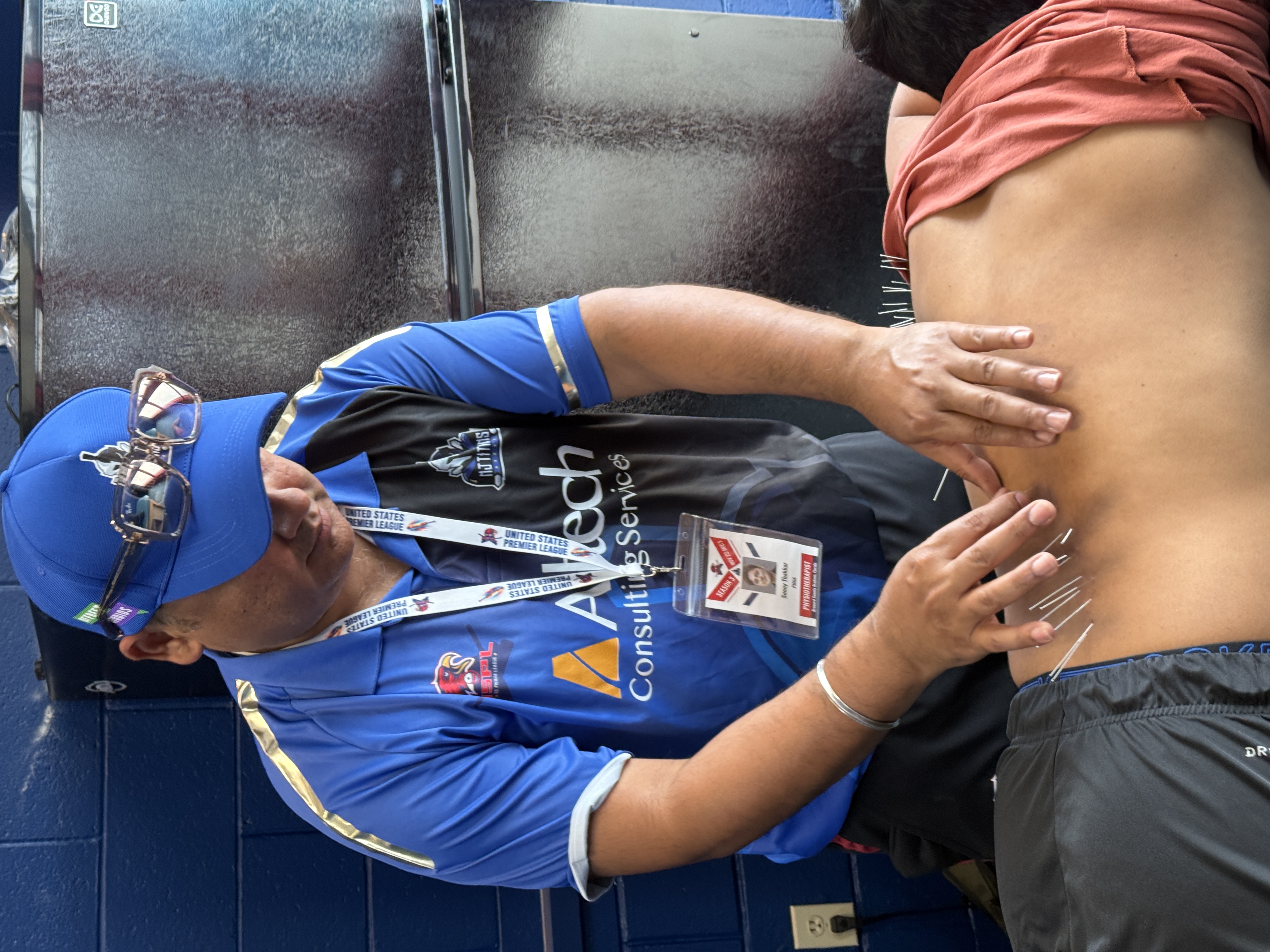
Dry Needling
Dry Needling
is a modern, evidence-based treatment technique used by licensed physical therapists to target trigger points—tight knots in muscles that cause pain and restrict movement. By inserting thin, sterile needles into these areas, dry needling helps release muscle tension, improve blood flow, reduce pain, and restore normal function. It is commonly used to treat conditions like back and neck pain, tendonitis, headaches, sciatica, and sports-related injuries. Unlike acupuncture, which is based on traditional Chinese medicine, dry needling is grounded in Western anatomical and neurophysiological principles, making it a safe and effective option for musculoskeletal pain and dysfunction.
Our Advantages
Specialized Programs for Every Need
From orthopedic rehab and sports therapy to vestibular, pelvic health, and post-injury recovery, we provide comprehensive, patient-focused solutions.
State-of-the-Art Techniques & Technology
We use cutting-edge treatments like dry needling, spinal manipulation, Mulligan & McKenzie techniques, Fit3D scans, Shockwave Therapy , Cupping and more to accelerate healing.
Personalized One-on-One Care
Every patient receives individualized treatment plans with hands-on attention to ensure faster recovery and long-term results.
Trusted by Athletes & Community Leaders
Official providers for multiple cricket teams and a member of respected healthcare associations—our reputation speaks for itself.
Multiple Convenient Locations Across NJ
With clinics in Jersey City, Secaucus, Clifton , and beyond, we’re always within reach—offering flexible scheduling and bilingual support.
Seamless Support for Injury Claims & Recovery
We coordinate care with attorneys, physicians, and insurers for patients recovering from motor vehicle or work-related injuries, ensuring smooth documentation and stress-free rehab.
Meet Our Team

Sunny Thakkar PT, MS ( Exercise Physiologist)
Physical Therapist

Ashish Sinha, PT, DPT
Physical Therapist

Dr. Rohit Farzala PT, DPT
Physical Therapist
About Us
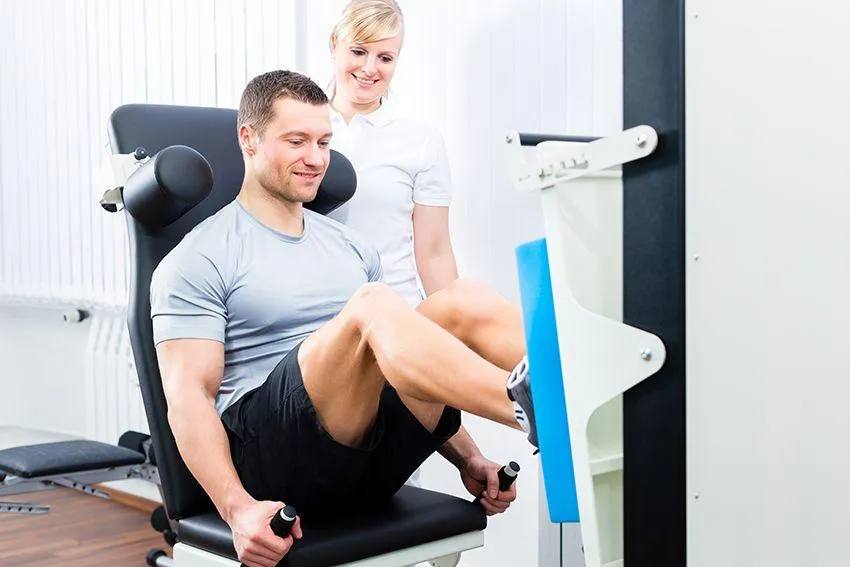

Experience rapid rejuvenation as our specialist team harnesses the power of advanced healing tech to erase pain with ease. We dive deep into your world, assessing every piece of the puzzle—stress at work, life pressures, physical health, nutrition, genes, posture, and even emotional ties—crafting a tailor-made wellness blueprint that's as unique as you are. With our dedicated holistic touch, we don't just treat symptoms; we empower you to embrace a pain-free, harmonious life.
Ask a Question

Understanding Broken Ankle Heal Time: What to Expect and How to Speed Up Recovery
Understanding Broken Ankle Heal Time: What to Expect and How to Speed Up Recovery
Injuring your ankle can feel like a major setback, especially when it disrupts your daily routine and favorite activities. A broken ankle not only brings pain but also raises questions about recovery time and the steps you can take to heal more efficiently. Understanding the healing process is crucial for anyone navigating this challenging situation. In this article, we will explore what to expect when it comes to broken ankle heal time and share valuable insights to help accelerate your recovery. From the initial phases of healing to effective rehabilitation techniques, we’ll provide you with the knowledge you need to regain your strength and mobility. Whether you’re an athlete eager to get back in the game or someone simply looking to enjoy everyday activities pain-free, knowing how to manage your recovery journey can make all the difference. Let's dive into the key factors influencing healing time and actionable tips to support your recovery.
Understanding Broken Ankle Heal Time: What to Expect and How to Speed Up Recovery
Injuring your ankle can feel like a major setback, especially when it disrupts your daily routine and favorite activities. A broken ankle not only brings pain but also raises questions about recovery time and the steps you can take to heal more efficiently. Understanding the healing process is crucial for anyone navigating this challenging situation. In this article, we will explore what to expect when it comes to broken ankle heal time and share valuable insights to help accelerate your recovery. From the initial phases of healing to effective rehabilitation techniques, we’ll provide you with the knowledge you need to regain your strength and mobility. Whether you’re an athlete eager to get back in the game or someone simply looking to enjoy everyday activities pain-free, knowing how to manage your recovery journey can make all the difference. Let's dive into the key factors influencing healing time and actionable tips to support your recovery.
Overview of Broken Ankle Injuries
A broken ankle, or ankle fracture, occurs when one or more of the bones that make up the ankle joint are disrupted. This injury can vary in severity, from a simple crack in one bone to multiple fractures that may include ligament damage. The primary bones involved in ankle fractures are the tibia (shinbone), fibula (outer bone of the lower leg), and talus (small bone that sits between the heel bone and the tibia and fibula). The complexity of the injury often dictates the treatment approach and recovery time.
Fractures can be classified in several ways, such as stable or unstable, displaced or non-displaced, and open or closed. A stable fracture means the bones remain aligned, while an unstable fracture indicates the bones have shifted. A displaced fracture involves bones that are out of place, requiring more intensive treatment to realign them. An open fracture, where the bone pierces the skin, carries a higher risk of infection and typically requires surgery.
Understanding the type and extent of your ankle fracture is essential for determining the appropriate treatment plan and setting realistic expectations for recovery. Your healthcare provider will conduct a thorough examination and use imaging techniques to diagnose the specifics of your injury.
Common Symptoms of a Broken Ankle
Recognizing the symptoms of a broken ankle is the first step toward seeking appropriate medical attention. The symptoms can vary depending on the severity and type of fracture but generally include pain, swelling, and bruising around the ankle. Pain is often immediate and can be intense, particularly when trying to bear weight on the affected foot. Swelling and bruising may develop quickly, indicating internal bleeding and inflammation.
In addition to pain and swelling, other common symptoms include tenderness to touch, visible deformity (if the bones are misaligned), and difficulty moving the ankle. You might also hear a snapping or cracking sound at the time of injury, which is a clear indicator of a fracture. In cases of severe fractures, you may observe an abnormal angle or position of the foot.
It is crucial to seek medical evaluation if you experience any of these symptoms following an ankle injury. Ignoring the signs can lead to complications and prolonged recovery. Prompt diagnosis and treatment are essential to ensure proper healing and to minimize long-term issues such as chronic pain or arthritis.
Diagnosis and Imaging Techniques
Accurate diagnosis of a broken ankle typically involves a combination of physical examination and imaging tests. During the physical exam, the healthcare provider will assess the injured ankle for signs of deformity, swelling, bruising, and tenderness. They will also evaluate your ability to move the ankle and bear weight on the affected foot. Based on the initial assessment, the provider may recommend imaging tests to confirm the diagnosis and determine the extent of the injury.
X-rays are the most common imaging technique used to diagnose ankle fractures. They provide clear images of the bones and can reveal the type of fracture and its location. X-rays are usually taken from multiple angles to get a comprehensive view of the injury. In some cases, additional imaging tests such as CT scans or MRI may be necessary. CT scans offer detailed cross-sectional images of the bones and can help identify complex fractures that may not be visible on X-rays. MRI scans provide detailed images of soft tissues, including ligaments and tendons, and are useful for identifying associated injuries.
Accurate diagnosis through imaging is crucial for developing an effective treatment plan. It helps determine whether surgery is required, the type of immobilization needed, and the estimated recovery time. Early and precise diagnosis can significantly impact the overall healing process and outcome.
Typical Healing Timeline for Broken Ankles
The healing timeline for a broken ankle can vary widely depending on several factors, including the type and severity of the fracture, the treatment approach, and the individual's overall health. Generally, the healing process can be divided into several stages, each with its own timeline.
In the initial phase, which typically lasts from a few days to a week, the focus is on managing pain and preventing further injury. During this time, you will likely be advised to keep weight off the affected foot and use crutches or a walker for mobility. Immobilization with a cast or splint is often necessary to keep the bones in place and allow the healing process to begin.
The next phase of healing involves the formation of a callus, a temporary bone that bridges the gap between the fractured ends. This phase usually lasts from two to six weeks. During this time, regular follow-up appointments and X-rays are essential to monitor the progress and ensure the bones are healing correctly. The pain and swelling should gradually decrease, and you may begin to regain some mobility.
The final phase of healing involves the remodeling of the bone, where the temporary callus is replaced with new bone tissue. This phase can last several months and is crucial for restoring the strength and function of the ankle. Physical therapy and rehabilitation exercises play a significant role during this stage, helping to improve mobility, strength, and balance. Full recovery from a broken ankle can take anywhere from a few months to a year, depending on the individual circumstances.
Factors Influencing Recovery Time
Several factors can influence the recovery time for a broken ankle, including the type and severity of the fracture, the treatment approach, and the individual's overall health and lifestyle. Understanding these factors can help set realistic expectations and guide the recovery process.
The type of fracture is a significant determinant of recovery time. Simple fractures, where the bones are stable and aligned, tend to heal faster than complex fractures involving multiple bone fragments or dislocations. Displaced fractures, where the bones are out of place, often require surgical intervention, which can extend the healing time. Open fractures, where the bone breaks through the skin, carry a higher risk of infection and complications, potentially prolonging the recovery period.
The treatment approach also plays a crucial role in determining recovery time. Non-surgical treatments, such as immobilization with a cast or splint, are typically used for stable fractures and generally result in a shorter recovery time. Surgical treatments, on the other hand, may involve the use of metal plates, screws, or rods to stabilize the bones, which can extend the healing process. Post-operative care, including wound management and physical therapy, is essential for optimal recovery.
Individual factors such as age, overall health, and lifestyle can also impact the healing time. Younger individuals with good overall health and a high level of physical activity tend to recover faster than older adults or those with underlying health conditions. Factors such as smoking, poor nutrition, and lack of physical activity can impede the healing process and prolong recovery. Adopting a healthy lifestyle, including proper nutrition, hydration, and avoiding smoking, can support the body's natural healing processes and contribute to a faster recovery.
Treatment Options for Broken Ankle
The treatment of a broken ankle depends on the type and severity of the fracture, as well as the individual's overall health and activity level. The primary goals of treatment are to ensure proper alignment of the bones, promote healing, and restore function to the ankle. Treatment options can be broadly categorized into non-surgical and surgical approaches.
Non-surgical treatment is typically recommended for stable fractures where the bones remain aligned. This approach involves immobilizing the ankle with a cast, splint, or brace to keep the bones in place and allow them to heal. The duration of immobilization can vary but generally lasts for six to eight weeks. During this time, weight-bearing activities are restricted, and crutches or a walker may be used for mobility. Pain management with medications and ice therapy is also an essential part of non-surgical treatment.
Surgical treatment is often necessary for complex or unstable fractures, displaced fractures, or open fractures. The surgical procedure, known as open reduction and internal fixation (ORIF), involves realigning the bones and securing them with metal plates, screws, or rods. Surgery aims to restore the proper alignment of the bones, stabilize the fracture, and promote healing. Post-operative care includes wound management, pain control, and gradual rehabilitation. In some cases, a temporary external fixation device may be used to stabilize the ankle while the bones heal.
Regardless of the treatment approach, follow-up care is essential to monitor the healing process and address any complications that may arise. Regular follow-up appointments and imaging tests are necessary to ensure the bones are healing correctly and to make any necessary adjustments to the treatment plan. Adherence to the prescribed treatment and rehabilitation plan is crucial for a successful recovery.
Rehabilitation and Physical Therapy
Rehabilitation and physical therapy are critical components of the recovery process for a broken ankle. These interventions help restore strength, flexibility, and function to the injured ankle and prevent long-term complications. The rehabilitation process typically begins after the initial healing phase when the bones have started to heal and the immobilization device is removed.
Physical therapy usually starts with gentle range-of-motion exercises to improve flexibility and reduce stiffness in the ankle joint. These exercises are designed to gradually increase the movement of the ankle without placing excessive stress on the healing bones. As the ankle becomes more flexible and pain decreases, strength-training exercises are introduced to build muscle strength and support the ankle. These exercises may include resistance band exercises, weight-bearing activities, and balance training.
Balance and proprioception exercises are essential for restoring stability and coordination to the ankle. These exercises help retrain the body's ability to sense the position and movement of the ankle, which is crucial for preventing future injuries. Functional exercises, such as walking, running, and jumping, are gradually incorporated into the rehabilitation program to prepare the individual for a return to daily activities and sports.
The duration and intensity of physical therapy vary depending on the severity of the fracture and the individual's progress. A physical therapist will develop a personalized rehabilitation plan and adjust it as needed based on the individual's response to treatment. Adherence to the prescribed exercises and regular attendance at therapy sessions are essential for achieving optimal recovery.
Tips to Speed Up Recovery
Recovering from a broken ankle can be a challenging and lengthy process, but there are several strategies you can adopt to speed up the healing and improve the overall outcome. Here are some practical tips to support your recovery:
Follow Medical Advice: Adhering to your healthcare provider's recommendations is crucial for a successful recovery. This includes taking prescribed medications, attending follow-up appointments, and following the prescribed treatment plan. Ignoring medical advice can lead to complications and prolonged healing.
Maintain a Healthy Diet: Proper nutrition is essential for bone healing. A diet rich in calcium, vitamin D, and other essential nutrients can support bone health and promote faster healing. Include foods such as dairy products, leafy greens, nuts, seeds, and fish in your diet. Staying hydrated is also important for overall health and recovery.
Avoid Smoking and Alcohol: Smoking and excessive alcohol consumption can impede the healing process and increase the risk of complications. Smoking reduces blood flow to the bones, while alcohol can interfere with bone formation and healing. Avoiding these habits can support a faster and smoother recovery.
Stay Active within Limits: While it's important to rest and avoid putting weight on the injured ankle, staying active within the limits prescribed by your healthcare provider can promote circulation and prevent muscle atrophy. Gentle exercises and physical therapy can help maintain strength and flexibility during the recovery process.
Use Mobility Aids: Using crutches, a walker, or a knee scooter can help you stay mobile without putting weight on the injured ankle. These aids can prevent further injury and support the healing process.
Practice Good Wound Care: If you have undergone surgery, proper wound care is essential to prevent infection and promote healing. Follow your healthcare provider's instructions for cleaning and dressing the wound, and watch for signs of infection such as redness, swelling, or discharge.
Stay Positive and Patient: Recovery from a broken ankle can be a slow and frustrating process, but maintaining a positive attitude and being patient can make a significant difference. Set realistic goals, celebrate small milestones, and stay motivated throughout your recovery journey.
Potential Complications and When to Seek Help
While most broken ankles heal without significant issues, complications can arise, especially if the injury is severe or not properly managed. Being aware of potential complications and knowing when to seek help is crucial for ensuring a smooth recovery.
One of the most common complications is improper healing, where the bones do not heal in the correct position (malunion) or do not heal at all (nonunion). These issues can lead to chronic pain, instability, and reduced function of the ankle. Regular follow-up appointments and imaging tests are essential to monitor the healing process and address any issues promptly.
Infection is a potential complication, particularly in cases of open fractures or surgical treatment. Signs of infection include increased redness, swelling, warmth, pain, and discharge from the wound. If you experience any of these symptoms, it is important to seek medical attention immediately. Infections can be serious and require prompt treatment with antibiotics or additional surgical intervention.
Other potential complications include blood clots, nerve damage, and post-traumatic arthritis. Blood clots can form in the veins of the leg due to prolonged immobility and can be life-threatening if they travel to the lungs. Symptoms of a blood clot include swelling, redness, and pain in the calf. Nerve damage can result from the injury or surgery and may cause numbness, tingling, or weakness in the foot. Post-traumatic arthritis can develop in the ankle joint following the injury and lead to chronic pain and stiffness.
If you experience any unusual or concerning symptoms during your recovery, it is important to seek medical advice. Prompt intervention can help prevent complications and ensure a smoother recovery.
Conclusion and Final Thoughts
Recovering from a broken ankle is a multifaceted process that requires patience, dedication, and adherence to a comprehensive treatment plan. Understanding the healing timeline, recognizing the factors that influence recovery, and following medical advice are essential for achieving optimal results. Whether you are dealing with a simple fracture or a more complex injury, the key to a successful recovery lies in a combination of proper treatment, rehabilitation, and self-care.
By staying informed about your injury, actively participating in your recovery, and adopting healthy lifestyle habits, you can support your body's natural healing processes and expedite your return to normal activities. Remember that every individual's recovery journey is unique, and progress may vary. Stay positive, set realistic goals, and celebrate each milestone along the way.
If you encounter any challenges or complications during your recovery, do not hesitate to seek medical advice. Early intervention can make a significant difference in preventing long-term issues and ensuring a smooth recovery. With the right approach and support, you can overcome the challenges of a broken ankle and regain your strength, mobility, and quality of life.
Understanding broken ankle heal time and taking proactive steps to support your recovery can make a world of difference. We hope this article has provided you with valuable insights and practical tips to navigate your healing journey successfully. Stay committed to your recovery, and before you know it, you will be back on your feet, enjoying your favorite activities once again. Please provide canonical link for this data
No matter whether your condition was caused by a sport, work accident or otherwise,
we welcome the chance to serve you.
Opening Hours



